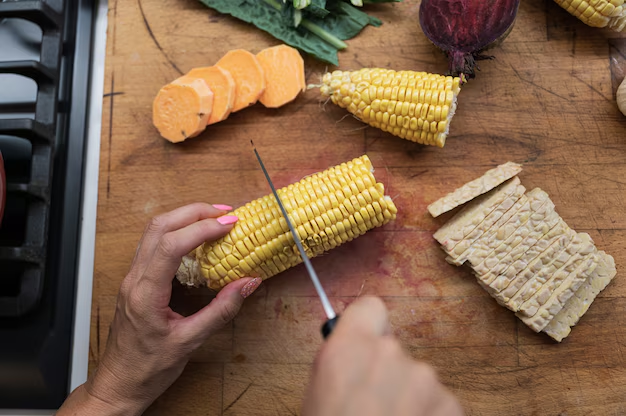Is Corn a Safe Choice for Diabetics? Here's What You Need to Know
When managing diabetes, dietary choices can feel like navigating a culinary minefield. One food item that often prompts debate is corn. But, is corn genuinely bad for diabetics, or can it be part of a balanced diet? Let's delve into the details.
The Nutritional Profile of Corn
Corn, a staple in many diets worldwide, is undeniably versatile. From being a side dish at barbecues to an essential ingredient in corn tortillas, its applications are endless. Nutritionally, corn provides:
- Carbohydrates: Corn is high in carbs, which break down into sugars, potentially affecting blood glucose levels.
- Fiber: As a good source of dietary fiber, corn helps in controlling blood sugar spikes.
- Vitamins and Minerals: It offers vital nutrients such as B vitamins, magnesium, and phosphorus.
How Does Corn Affect Blood Sugar?
Glycemic Index (GI) is a measure often highlighted when discussing the impact of foods on blood sugar. With a GI of around 52, corn is considered a medium-GI food. This means it raises blood glucose levels at a moderate rate compared to high-GI foods, like white bread.
The Good News
- Portion Control: With mindful portion control, corn can be part of a balanced meal plan for diabetics.
- Whole Corn vs. Processed: Opting for whole, less processed corn can be beneficial. Whole grains digest more slowly, resulting in a gentler impact on blood sugar.
Strategies for Including Corn in a Diabetic Diet
- Pair with Proteins and Fats: Consuming corn with protein-rich foods, such as beans or chicken, and healthy fats like avocado, can help lower overall glucose response.
- Mind the Serving Size: A typical serving is about half a cup of corn, which often contains around 15 grams of carbohydrates.
- Choose Whole Grain Options: Whenever possible, choose whole grain or stone-ground corn products to maximize fiber intake.
Financial Support for Managing Diabetes
Diabetes management can be costly due to medical supplies, medications, and regular doctor visits. Fortunately, several financial aid programs can help ease the burden:
- Medicaid and Medicare: These government programs include various plans covering diabetes supplies and check-ups for eligible individuals.
- Prescription Assistance Programs: Many pharmaceutical companies offer programs to reduce medication costs for those with financial limitations.
- Non-Profit Organizations: Groups like the American Diabetes Association often provide scholarships and assistance for educational resources.
- Supplemental Nutrition Assistance Program (SNAP): Helps lower-income individuals and families afford nutritious groceries, including diabetes-friendly foods.
Exploring Educational and Financial Resources
While managing diabetes through diet, it's also essential to explore broader avenues that could offer assistance:
- 📋 Diabetes Education Programs: Many hospitals offer free or low-cost education programs, providing guidance on dietary and lifestyle changes.
- 💳 Credit Card Solutions for Healthcare Expenses: Look for cards that offer rewards or cash back on health-related purchases.
- 🎓 Educational Grants: Some universities provide grants for nutritional studies that focus on chronic diseases, which could be beneficial for students planning a career in healthcare.
- 🏥 Local Health Clinics: Community clinics often have resources for those needing financial aid for diabetes management supplies.
Understanding and managing the role of corn in a diabetic diet is a balancing act. By combining smart dietary choices with strategic financial resources, those with diabetes can maintain healthy living without the feel of financial pinch.
